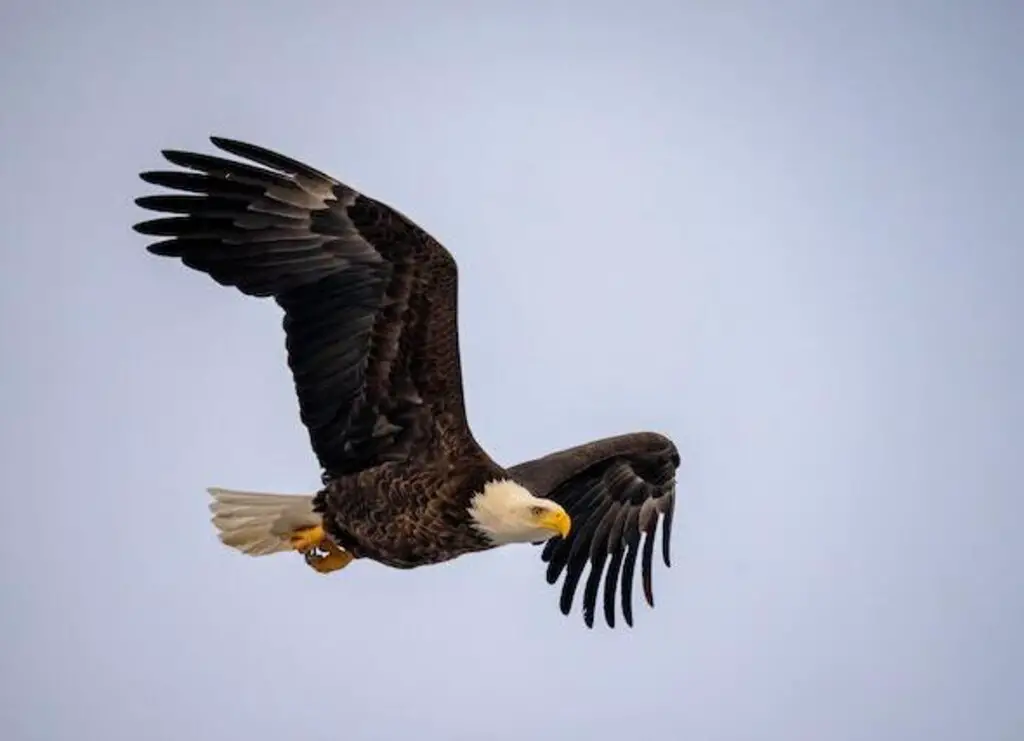Ever wondered how long eagles can live? Join us as we explore the lifespan of these majestic birds, uncovering factors that influence their longevity, and diving into fascinating insights about their behavior and habitats.
Table of Contents
- 0.1 Brief Overview of Eagles as Majestic Birds of Prey
- 0.2 Importance of Understanding their Lifespan for Conservation Efforts
- 1 How Long Do Eagles Live?
- 2 General Lifespan of Eagles
- 3 Longest-Lived Eagle Species: Harpy Eagle (Harpia harpyja)
- 4 Shortest-Lived Eagle Species
- 5 Factors Influencing Eagle Lives
- 6 Conclusion
- 7 FAQs: How Long Do Eagles Live?
- 7.1 Do all eagle species have the same lifespan?
- 7.2 What factors influence an eagle’s lifespan?
- 7.3 Are there any eagle species with exceptionally long lifespans?
- 7.4 Are there any eagle species with relatively shorter lifespans?
- 7.5 How does habitat quality affect an eagle’s lifespan?
- 7.6 Does diet play a role in an eagle’s lifespan?
- 7.7 How do genetics influence an eagle’s lifespan?
- 7.8 Do human activities affect the lifespan of eagles?
- 7.9 Why is understanding an eagle’s lifespan important for conservation efforts?
- 8 Author
Brief Overview of Eagles as Majestic Birds of Prey
Eagles are members of the Accipitridae family and belong to the genus Aquila (the true eagles) or Haliaeetus (the sea eagles).
Their powerful physique is characterized by muscular bodies, sharp curved beaks and talons designed for capturing prey efficiently.
With wingspans ranging from six to eight feet or even more in some species, they possess impressive aerial capabilities. These raptors showcase remarkable diversity across different habitats around the world.
From desert-dwelling Verreaux’s Eagles to forest-dwelling Philippine Eagles and sea-faring White-bellied Sea Eagles – each species has adapted to thrive in its unique environment.
Their plumage varies widely, too; some exhibit striking contrasts, like the contrast between a Bald Eagle’s white head and tail against its dark brown body.
Eagles are known for their exceptional eyesight, which enables them to spot prey from great distances during high-altitude flights.
Given this visual acuity combined with astonishing speed and agility while hunting or defending territory, it is no wonder that they have become symbols of power and majesty in countless cultures across the globe.
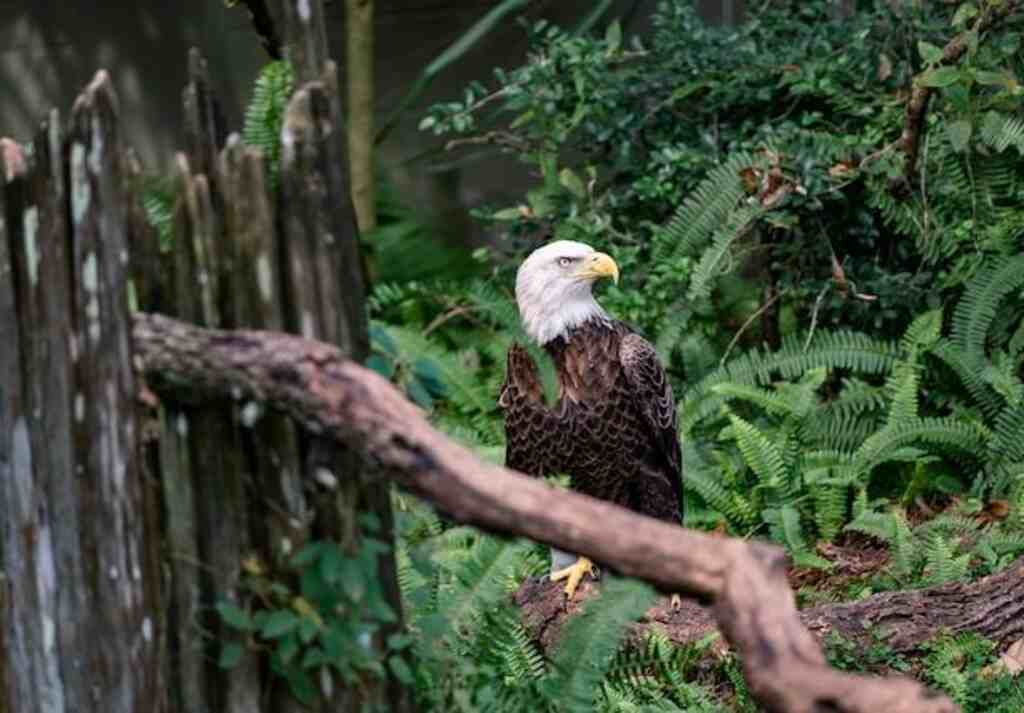
Importance of Understanding their Lifespan for Conservation Efforts
Gaining a comprehensive understanding of an eagle’s lifespan is crucial for effective conservation efforts. By studying their longevity patterns, scientists can assess population health, monitor threats, and design targeted conservation strategies.
Determining the factors that influence their lifespan provides insights into key ecological parameters such as habitat quality, prey availability, and potential impacts from human activities.
Moreover, eagles serve as indicators of environmental health due to their position at the top of the food chain.
Their longevity reflects the overall well-being of ecosystems they inhabit.
Any decline in eagle populations or a decrease in their average lifespan could suggest ecological imbalances or threats to biodiversity within a particular region.
Conservation efforts focused on preserving eagle habitats, reducing pollution levels that affect their prey base, and mitigating human-induced disturbances can all be informed by a comprehensive understanding of an eagle’s lifespan.
By adopting proactive measures based on scientific research, we can ensure these magnificent birds continue to grace our skies for generations to come.
How Long Do Eagles Live?
Eagles have an average lifespan ranging from 20 to 30 years in the wild. However, specific factors such as species, habitat quality, diet, and genetics can influence their longevity.
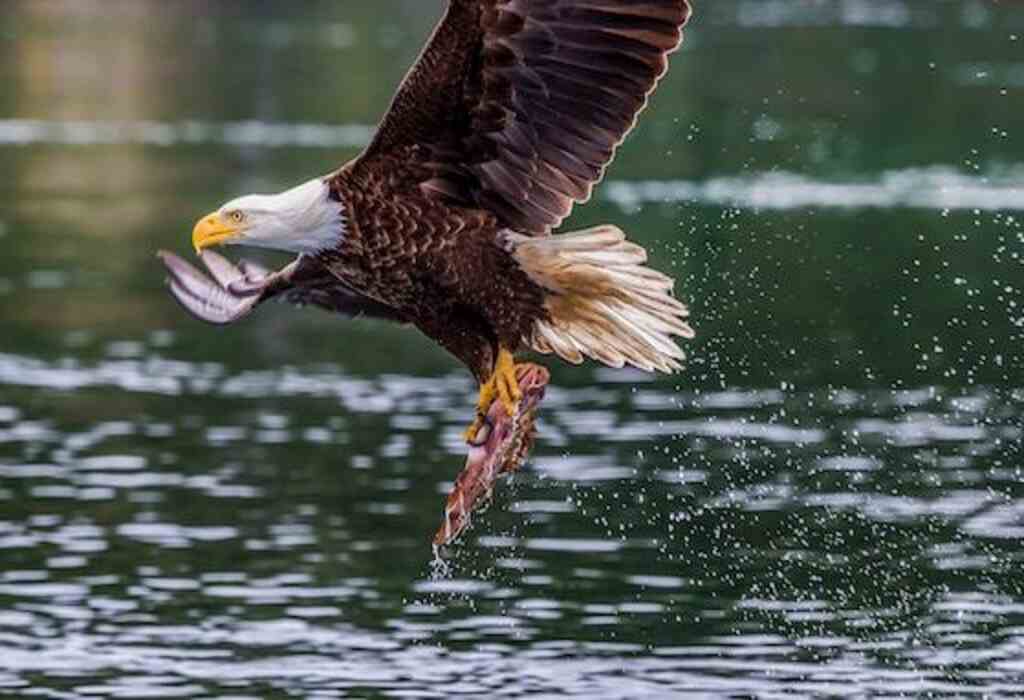
General Lifespan of Eagles
Eagles, with their awe-inspiring beauty and powerful presence, have long captivated the human imagination. As exceptional birds of prey, they command respect and admiration.
Understanding the lifespan of eagles is crucial not only for our appreciation of these magnificent creatures, but also for informing conservation efforts aimed at their protection.
While specific lifespan ranges can vary among eagle species, a general understanding of their longevity provides valuable insights into their biology and ecological needs.
Average Lifespan Range for Most Eagle Species (20–30 years)
The average lifespan range for most eagle species typically falls between 20 and 30 years in the wild. However, it is important to note that this average can be influenced by multiple factors unique to each species.
For instance, larger eagle species like the Bald Eagle (Haliaeetus leucocephalus) or the Steller’s Sea Eagle (Haliaeetus pelagicus) tend to have longer lifespans compared to smaller species such as the African Hawk-Eagle (Aquila spilogaster).
Individual factors, such as sex and overall health, can also play a role in determining an eagle’s lifespan.
Factors Influencing Longevity: Habitat, Diet, and Genetics
Multiple interrelated factors contribute to the longevity of eagles. One crucial element is habitat quality. Eagles require diverse ecosystems with ample food resources and suitable nesting sites to thrive.
Deforestation, pollution, and habitat loss directly impact their ability to find suitable breeding sites or adequate prey populations. Diet plays a key role in an eagle’s lifespan as well.
These raptors are carnivorous hunters that mainly feed on fish or small mammals depending on availability within their habitat.
Environmental changes affecting prey abundance or quality can have cascading effects on an eagle’s health and survival prospects.
Genetics also influence an eagle’s lifespan. The variations in genetic makeup and inherent traits can predispose individuals to different health conditions or reproductive success.
For example, certain genetic predispositions may make an individual more susceptible to diseases or impair their ability to reproduce, ultimately affecting their longevity.
While the average lifespan for most eagle species is around 20 to 30 years in the wild, various factors influence these numbers.
Habitat quality, diet availability, and genetic predispositions all play significant roles in determining an eagle’s lifespan.
Recognizing the complexities behind their longevity helps us appreciate the delicate balance required for their survival and underscores the importance of preserving their habitats for future generations to witness the soaring grace of these remarkable birds.
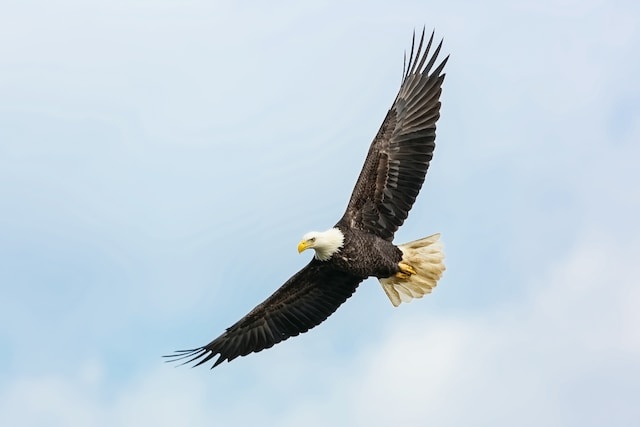
Longest-Lived Eagle Species: Harpy Eagle (Harpia harpyja)
A Majestic Predator of the Treetops
The Harpy Eagle, also known as Harpia harpyja, is a large and formidable bird of prey that inhabits the dense forests of Central and South America.
With its striking appearance and powerful build, this apex predator has captured the imagination of nature enthusiasts and scientists alike.
One cannot help but be in awe of its unique characteristics that make it stand out among its avian counterparts.
The Majesty lies in the Details
At first glance, the Harpy Eagle commands attention with its massive size, standing up to 3 feet tall and possessing a wingspan that can exceed 6 feet.
Its imposing presence is enhanced by its striking appearance – a crown-like arrangement of feathers atop its head, resembling a regal headdress.
The bird’s robust talons are incredibly strong, capable of exerting pressure equivalent to several hundred pounds per square inch.
These adaptions ensure successful hunting and enable it to capture prey such as monkeys and sloths.
An Exemplary Lifespan
What truly sets the Harpy Eagle apart from other eagle species is its exceptional lifespan in the wild.
While most eagles have an average lifespan ranging from 20 to 30 years, Harpy Eagles have been known to live up to an astonishing 35–40 years in their natural habitat.
Some individuals have even surpassed this milestone, further highlighting their remarkable longevity.
Secrets Behind their Longevity
Several factors contribute to the extended lifespan observed among Harpy Eagles. Firstly, these magnificent birds enjoy relatively low predation risk as they occupy the top spot in their food chain due to their size and strength.
Their mastery over treetop habitats helps them avoid potential dangers and threats.
Additionally, the Harpy Eagle’s slow reproductive rate plays a crucial role in their long lifespan.
They typically produce only one chick every two to three years, investing substantial time and effort into raising their offspring.
This low reproductive output is compensated by focusing on the survival and success of each individual, ensuring they reach maturity and maximize their opportunities for a longer life.
The Harpy Eagle stands as an emblem of wisdom and endurance among eagles.
Its unique physical characteristics, exceptional lifespan, low predation risk, and slow reproductive rate collectively contribute to its impressive longevity in the wild.
By delving into the intricacies of this majestic species, we can further grasp the essence of its survival strategies while appreciating its significant role in maintaining the delicate balance of our planet’s ecosystems.
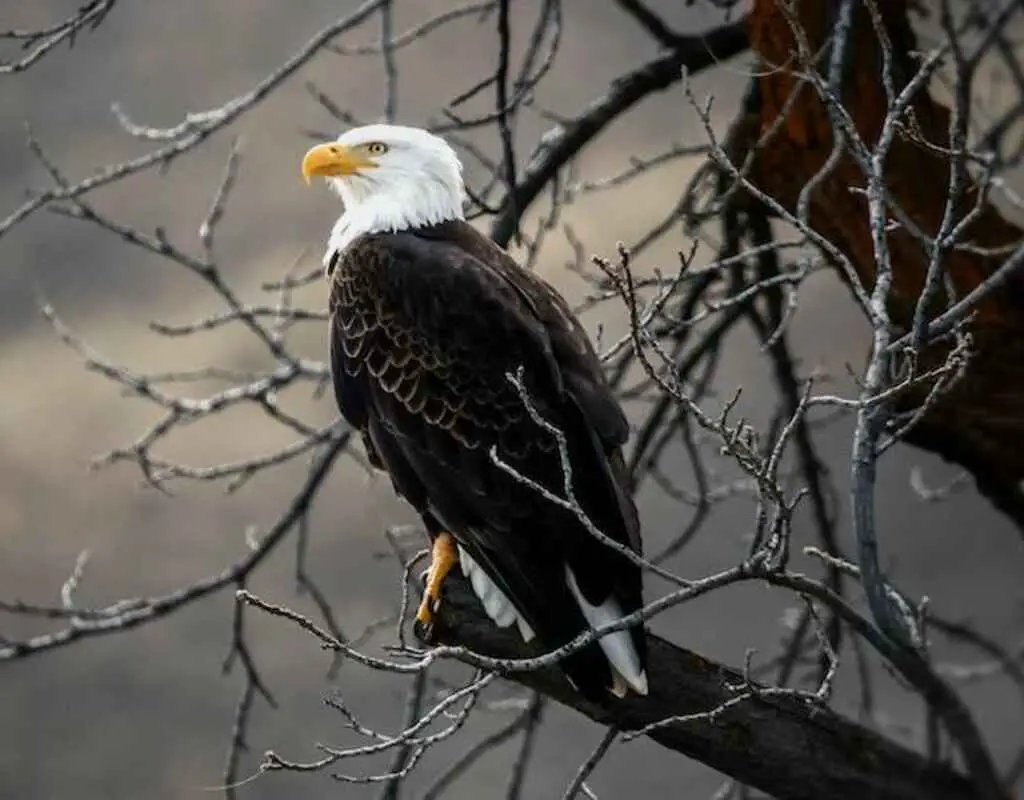
Shortest-Lived Eagle Species
White-bellied Sea Eagle (Haliaeetus leucogaster)
The White-bellied Sea Eagle, scientifically known as Haliaeetus leucogaster, is a magnificent avian species that primarily inhabits coastal regions of tropical and subtropical areas across the Indo-Pacific.
These graceful eagles are known for their striking appearance, characterized by their gleaming white underparts, contrasting with the dark brown plumage on their upper body.
With a wingspan averaging around 6–7 feet (1.8-2.1 meters) and an overall length of approximately 30–35 inches (76–89 centimeters), they possess an impressive presence in their natural habitats.
The habitat preferences of White-bellied Sea Eagles predominantly revolve around coastal areas such as mangroves, estuaries, seashores, and cliffs.
These locations provide them with an abundant supply of food sources like fish and waterbirds.
Their proximity to aquatic environments is crucial for their survival, since they are incredibly skilled at hunting from the air or perched on high vantage points overlooking the water.
Unfortunately, compared to other eagle species, the White-bellied Sea Eagle has a relatively shorter lifespan in the wild, averaging about 15–20 years.
Several factors contribute to this comparative brevity in longevity for these majestic birds.
One significant factor affecting the lifespan of White-bellied Sea Eagles is higher predation risk due to competition and conflicts within their territories.
Being top predators in coastal ecosystems, these eagles often encounter territorial disputes with other raptors or even encounters with larger predators like crocodiles or larger birds of prey that may pose a threat to their survival.
Environmental factors also play a role in determining the lifespan of these sea eagles.
Coastal areas, where they predominantly reside, are subject to natural and man-made disturbances such as habitat destruction, pollution, and changes in climate patterns.
These factors can lead to a decline in prey availability or food scarcity, ultimately impacting the overall health and survival of the White-bellied Sea Eagle population.
While the White-bellied Sea Eagle is undoubtedly a captivating coastal species with its distinctive appearance and hunting prowess, they face challenges that contribute to their comparatively shorter lifespan.
The combination of increased predation risks within their territories and environmental factors affecting their habitat can influence their ability to thrive in the wild.
Understanding these dynamics is crucial for conservation efforts aimed at ensuring the continued survival of this remarkable eagle species in coastal ecosystems worldwide.
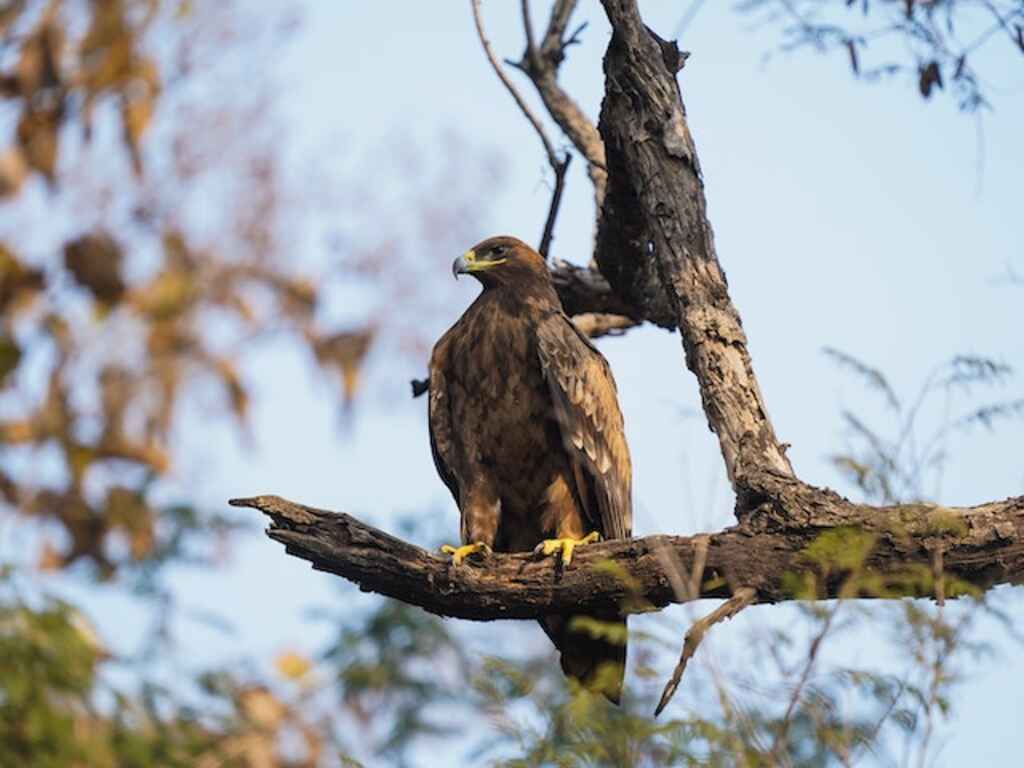
Factors Influencing Eagle Lives
The Role of Habitat and Environmental Conditions
Eagles are highly adaptable birds, but their lifespan can be influenced by the availability and quality of their habitat.
A pristine and well-preserved environment provides ample opportunities for hunting, nesting, and rearing offspring.
Eagles residing in fragmented or degraded habitats may face challenges in finding suitable food sources or safe nesting sites, thereby potentially shortening their lifespan.
Additionally, exposure to environmental pollutants like heavy metals can negatively impact eagle health and longevity.
Dietary Factors: The Importance of Nutrition
The diet of an eagle plays a crucial role in determining its lifespan. Eagles are primarily carnivorous, with fish being a staple for many species.
Availability of prey and the quality of the food source directly affect an eagle’s overall health and longevity.
A diverse diet ensures proper nutrition and reduces the risk of deficiencies or imbalances that could shorten an eagle’s lifespan.
In areas where pollution affects fish populations, or when eagles consume contaminated prey species, their health deteriorates, leading to a potential decrease in longevity.
Genetics: Inherited Traits and Genetic Diversity
Just like humans, eagles inherit certain genetic traits from their parents that can influence their longevity.
Genetic factors play a role in determining an individual’s overall health status, disease susceptibility, reproductive success rate, and resistance to various environmental stressors.
Maintaining genetic diversity within eagle populations is crucial for ensuring long-term viability, as it reduces susceptibility to inherited diseases or disorders that could shorten lifespans.
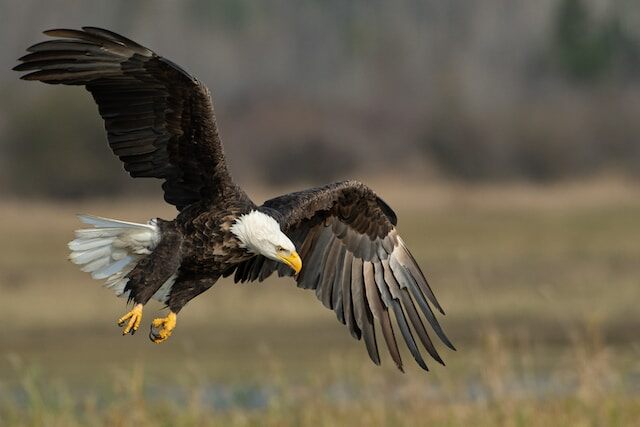
Conclusion
Eagles are captivating creatures with remarkable lifespans that depend on various intricate factors.
Habitat quality and environmental conditions significantly impact the overall wellbeing of these majestic birds, highlighting the importance of preserving natural habitats free from degradation and pollution.
Adequate nutrition through a diverse diet is critical for maintaining an eagle’s health and longevity.
Moreover, genetic diversity within populations is vital to safeguard the long-term survival and resilience of eagles.
By understanding these factors and working towards their conservation, we can ensure that future generations will continue to marvel at the awe-inspiring sight of eagles soaring through the skies, symbolizing both strength and freedom.
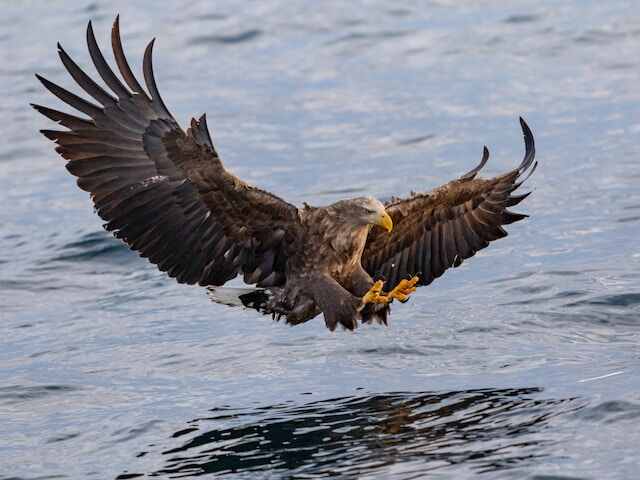
FAQs: How Long Do Eagles Live?
Do all eagle species have the same lifespan?
No, the lifespan of eagles can vary among different species. Larger eagle species like the Bald Eagle or the Steller’s Sea Eagle tend to have longer lifespans compared to smaller species such as the African Hawk-Eagle.
What factors influence an eagle’s lifespan?
Multiple factors contribute to the lifespan of eagles, including habitat quality, prey availability, genetic predispositions, and overall health. Environmental changes, such as habitat loss and pollution, can also impact an eagle’s longevity.
Are there any eagle species with exceptionally long lifespans?
Yes, the Harpy Eagle is known for its exceptional lifespan. While most eagles live for 20 to 30 years, Harpy Eagles have been observed to live up to an astonishing 35–40 years in their natural habitat.
Are there any eagle species with relatively shorter lifespans?
The White-bellied Sea Eagle has a relatively shorter lifespan compared to other eagle species, averaging about 15–20 years in the wild. Factors such as increased predation risks and environmental disturbances contribute to their shorter lifespan.
How does habitat quality affect an eagle’s lifespan?
A pristine and well-preserved habitat provides ample opportunities for hunting, nesting, and rearing offspring, positively impacting an eagle’s lifespan. Fragmented or degraded habitats can pose challenges in finding food sources and safe nesting sites, potentially shortening their lifespan.
Does diet play a role in an eagle’s lifespan?
Yes, an eagle’s diet is crucial for its overall health and longevity. Eagles mainly feed on fish or small mammals, and the availability and quality of their food source directly affect their lifespan. Pollution or changes in prey abundance can impact their health and decrease their longevity.
How do genetics influence an eagle’s lifespan?
Genetic factors play a role in an eagle’s overall health, disease susceptibility, reproductive success, and resistance to environmental stressors. Maintaining genetic diversity within eagle populations is important for ensuring their long-term viability and minimizing the risk of inherited diseases.
Do human activities affect the lifespan of eagles?
Yes, human activities such as habitat destruction, pollution, and disturbance can negatively impact eagle populations and their lifespan. Conservation efforts aimed at preserving eagle habitats and mitigating human-induced disturbances are important for their long-term survival.
Why is understanding an eagle’s lifespan important for conservation efforts?
A comprehensive understanding of an eagle’s lifespan helps assess population health, monitor threats, and design targeted conservation strategies. Eagles serve as indicators of environmental health, and any decline in their populations or lifespan could suggest ecological imbalances or threats to biodiversity.

